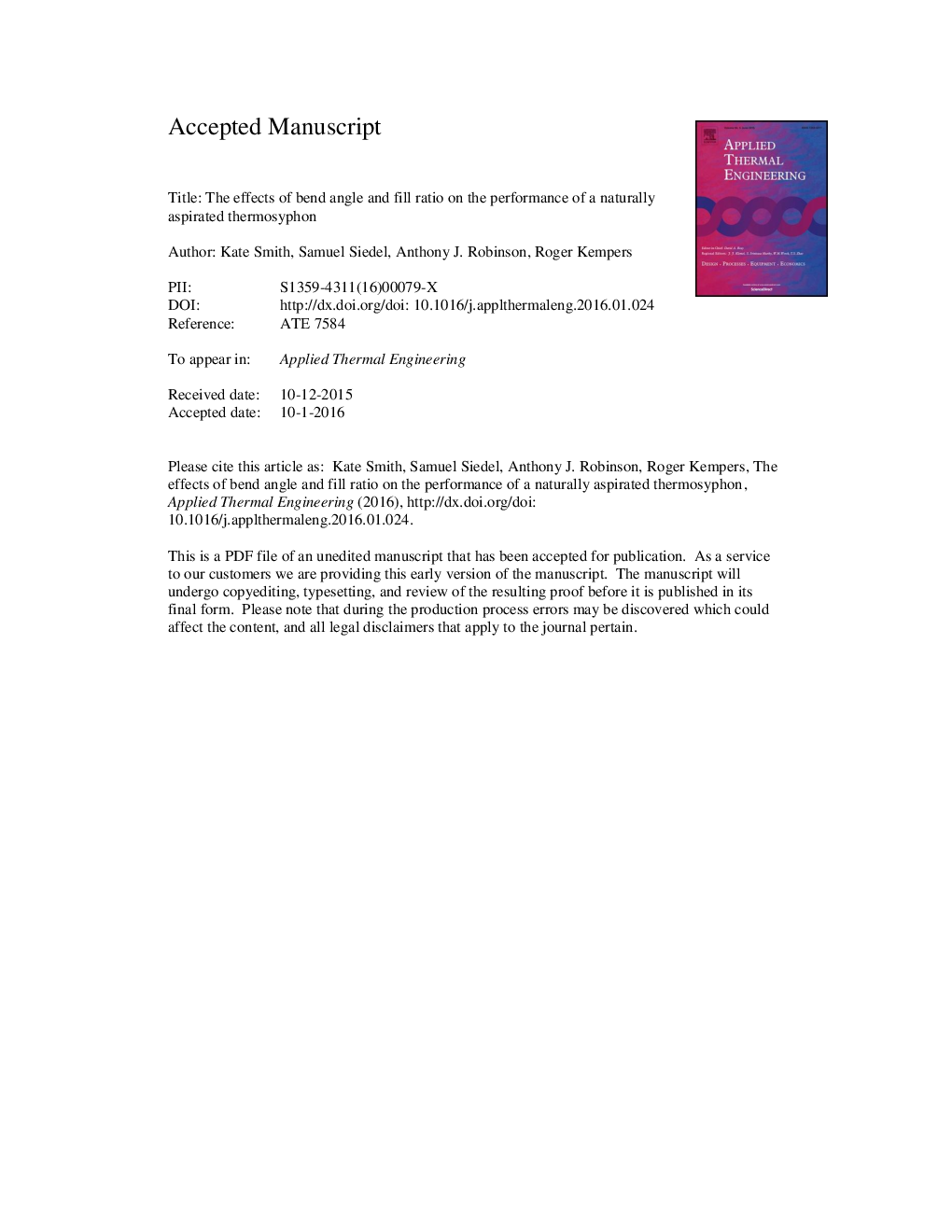| Article ID | Journal | Published Year | Pages | File Type |
|---|---|---|---|---|
| 7048128 | Applied Thermal Engineering | 2016 | 35 Pages |
Abstract
An experimental investigation is carried out on a fully passive cooling system for possible application in cooling tower top remote radio heads (RRHs). Specifically, the system implements a reflux thermosyphon to transport the heat from simulated power amplifiers to a natural convection cooled remote heat exchanger. In this work, the thermosyphon performance is investigated with changing evaporator orientation, rotating from vertical to horizontal in increments of 30 degrees. Of course the condenser remains vertical as it is being cooled by buoyant natural convection. Furthermore, the combined influence of fluid loading and bend angle is considered. For the vertical evaporator orientation and low applied power and high fill volumes the unsteady geyser boiling regime is apparent which tends to adversely influence the effectiveness of the two phase heat transfer in both the evaporator and condenser. Increasing the thermal loading and increasing the bend angle tend to mitigate geyser boiling and improve the heat transfer. For moderate to high heat inputs the thermosyphon is fairly insensitive to both bend angle and fluid loading and it is hypothesised that this is because pool boiling and film condensation are the mechanisms of heat transfer in the evaporator and condenser sections respectively. However, the failure power was found to have a strong dependence on bend angle and fluid loading and the mechanisms for this are discussed. It is concluded that the overall thermal system is appropriate for its target application with the thermosyphon taking up a very small portion of the overall thermal budget.
Related Topics
Physical Sciences and Engineering
Chemical Engineering
Fluid Flow and Transfer Processes
Authors
Kate Smith, Samuel Siedel, Anthony J. Robinson, Roger Kempers,
